"This is surreal," Monica Lewinsky keeps saying. She is trying to make her way to her seat in a crowded room where everyone wants her attention. It is a hot summer night in New York, in a blip of a pandemic reprieve before the Delta variant hits, and the city's vaccinated elite are practically vibrating with energy. Nobody has been to a party like this in a long time.
The occasion is a July screening and reception to promote Impeachment, the latest instalment of Ryan Murphy's American Crime Story anthology series, which revisits the events leading up to the impeachment of President Bill Clinton through the perspectives of the women involved.
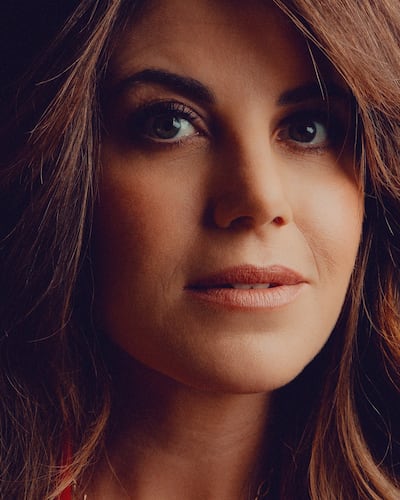
FX’s award-winning series is back. Impeachment: American Crime Story premieres Tues 9/7. Only on FX. #ACSImpeachment pic.twitter.com/FUwZCdurIH
— Sarah Paulson (@MsSarahPaulson) August 27, 2021
Lewinsky is a big part of that story, of course. So are Linda Tripp, the friend who exposed her affair with the American president; Paula Jones, who had accused him of sexual harassment; and, to a lesser extent, Hillary Clinton. But Lewinsky is the only one who is a producer on the show.
Lewinsky, who is now 48, skipped the screening portion of the evening – no need to rewatch the most humiliating period of her life with a roomful of strangers, she jokes – and instead had a video session with her therapist. But she has agreed to attend the reception afterwards. It takes place in the old Four Seasons restaurant, once a nexus of Manhattan’s famous and powerful, some of whom have returned to their old haunt for the event.
There is Tina Brown, the celebrated editor who in 1999 published the first interview with Hillary Clinton about the affair, in Talk magazine, and will later remark how gracious Lewinsky has been when they speak this evening. Gay Talese, picking at a filet mignon, notes out loud to his tablemates how much thinner she looks. Calvin Trillin, another stalwart of New York’s media elite, rises as the room offers Lewinsky a roaring standing ovation.
The new faces include Beanie Feldstein, seated next to Lewinsky, who plays her in the 10-part series, and who for months had carried around a copy of Lewinsky's autobiography in her backpack. Nearby is Sarah Paulson, who so convincingly embodies Tripp in the show – her hulking posture, the cadence of her voice – that certain scenes give Lewinsky flashbacks.
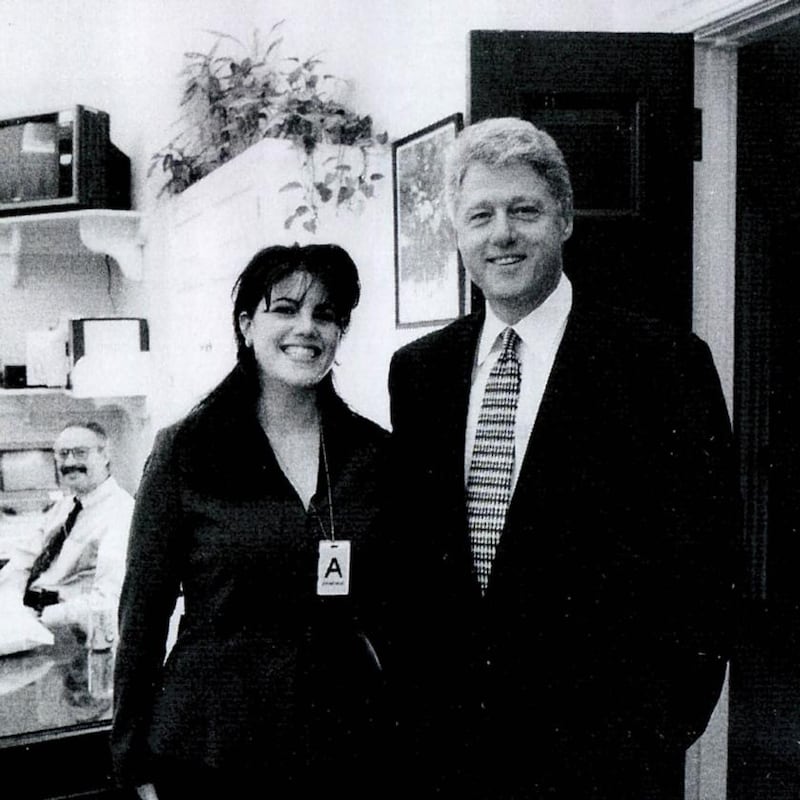
Lewinsky was 22 when her relationship with the president began – an affair that played out over 18 months, mostly within the Oval Office, even as she moved into a full-time job in the Pentagon. The Impeachment series begins on the day it all came crumbling down: January 16th, 1998, when the FBI ambushed her in the Pentagon City mall. “That was the most terrifying day of my life, which competes for worst day with the release of the Starr report,” Lewinsky says.
In the show’s opening scene we see a young Lewinsky in workout gear and tube socks, naively waiting for Tripp, who had by then turned over some 20 hours of secretly recorded phone conversations between them. The next 11 hours, in which Lewinsky was interrogated in a nearby hotel room and threatened with 27 years in jail, would change the course of her life – and, of course, become one of the enduring political scandals of our time.
When you have made a colossal mistake like I did so early in your life, and lost so much because of it, the idea of making a mistake is catastrophic... yet in order to move forward I have to take risks
We all know what came next. A steamy 160-page report to the US Congress. Oral-sex jokes on late-night television, and an uptick in cigar sales. The impeachment hearings. A tarnished political legacy. And a young intern who once dreamed of becoming a forensic psychologist whose identity was now seemingly carved in stone: That woman.
Since then Lewinsky has tried reinventing herself repeatedly, for a long time without much success. There was a failed handbag line. A brief stint in reality TV. Moving overseas. Nearly a decade of self-imposed silence. But that began to change in 2014, with an essay in Vanity Fair – in which she declared it was time to “burn the beret and bury the blue dress” and “bring a purpose to my past” – and then a Ted Talk, the following year, about the public humiliation she endured.
Together they told a new version of her story at a time when the culture seemed ready to hear it – amid greater awareness about bullying and trauma and a more sophisticated understanding of sexual power dynamics. “The world was now understanding her side of things,” says David Friend, her editor at Vanity Fair, where she is a contributor.
She has since found paid work campaigning against bullying and speaking on the subject. She has slowly made her way into producing, including an upcoming documentary about public shame and a newly formed production company, aptly named Alt Ending.
But Impeachment, which premieres in the US, on the FX network, on Tuesday, September 7th, is the most personal – and arguably the most prominent – chapter in her rehabilitation. The good news for Lewinsky is that this time she’s shaping the story herself. The bad, perhaps, is that it means reliving the darkest period of her life – and introducing it to at least one generation that wasn’t around to see it. She still isn’t exactly sure how she feels about the whole thing.
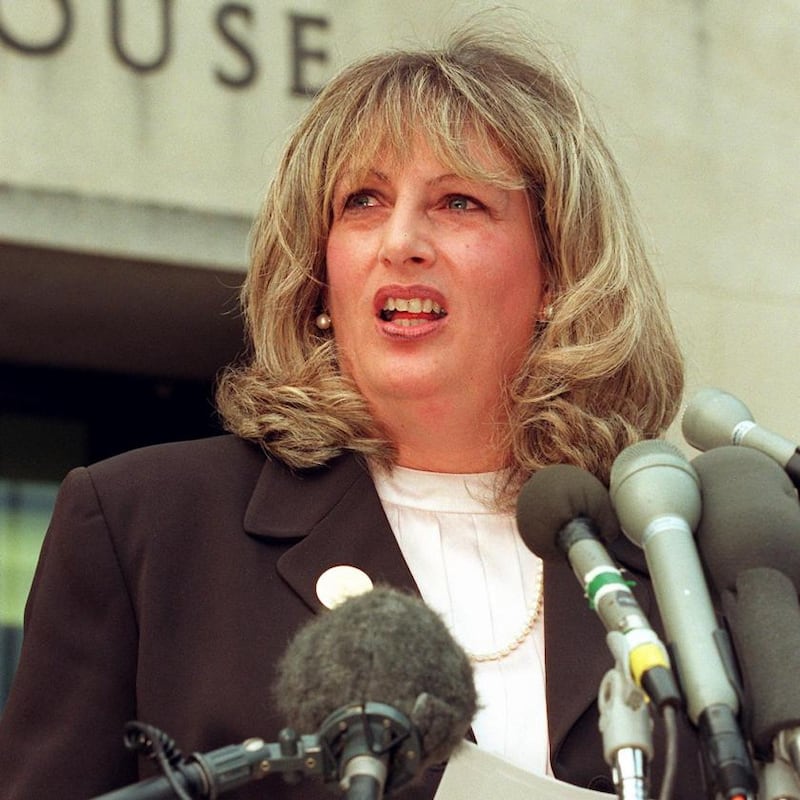
And yet here she is at the reception, in the company of so many of those who once made a living mocking her, preparing to revisit the same drama from which she has spent half a lifetime trying to move on. She looks happy, smiling as she greets dozens of well-wishers, but also slightly wary.
“When you have made a colossal mistake like I did so early in your life, and lost so much because of it, the idea of making a mistake is catastrophic,” she tells me later. “And yet in order to move forward I have to take risks. I have to try things. I have to continue to define who I am.”
Out of the Spotlight
I first met Lewinsky seven years ago, as she was preparing to re-emerge after nearly a decade out of the spotlight. I had come of age in the Clinton era. I vividly remember, as a teen, poring over the Starr report with friends, too young to understand the complexities or power dynamics of the president’s affair with a young intern but old enough to know there was something we weren’t supposed to like about “that woman” – the one the president, in a news conference, angrily denied having had “sexual relations with”.
When I got to know Lewinsky, more than a decade later, she was 41, but without many of the things a person her age might want: a permanent residence, a source of income, a career path, a family of her own. While the rest of the world – the Clintons, the news media, even the other women involved – had moved on, she was seemingly frozen in time.
It just doesn't impact me the same way, you know? [The Clintons] don't loom nearly as large as they did for two decades in my life
Not for lack of trying. In 2005 she once again tried to start over, moving to London for a master’s degree in social psychology. She hoped she might be able to resume what her therapist at the time called “a normal developmental track”. “I wanted a job, I wanted a husband, I wanted kids,” she says. “I wanted to be treated normally.” But she could never quite escape the shadow that hung over her name.
After graduate school she moved briefly to Portland, Oregon, where she tried, and failed, to get a job in marketing. "I must have applied for 50 jobs," she says. And so she retreated. She moved back to Los Angeles, where she had grown up, still dependent on her parents for financial support. She volunteered and spent time with friends, and worked with a variety of mental-health specialists. (She had been diagnosed with post-traumatic stress disorder after the events of 1998.)
All the while she continued to turn down offers to capitalise on her story: television, books, plays, a graphic novel and hundreds of interviews. (The last time somebody counted, there were 128 rap songs that cite her name.)
Recently she found herself on a road near Pasadena that jolted her back to that aimless time in Los Angeles, when she’d drive long distances to pass the time. “It was a dark, dark time,” she says. “I just had no purpose.”
Then, in 2010, Tyler Clementi, a student at Rutgers University, killed himself after his roommate used a webcam to film him in an intimate encounter with another man. Lewinsky had no connection to Clementi, but her mother was beside herself with grief. She later realised her mother was "reliving a time when she sat by my bed at night, and made me shower with the bathroom door open", out of fear she might take her own life.
Lewinsky had spent time thinking about the impact of shame on the psyche; at graduate school she had studied the effects of trauma on identity. But her mother’s response triggered something more urgent in her. She thought back to a conversation she’d had with a professor in graduate school – about how there was no “competing narrative” to her story. Could she be the one to write her way out?
There is no perfect formula to reclaiming a narrative. And yet something about her Vanity Fair essay clicked. David Letterman expressed remorse about how he had mocked her. She was invited to speak at Ted, and then at the Cannes Lions Festival and others, and not to talk about what happened then but about what was happening now. She became a catalyst for broader reconsideration of some of the other women who were cast aside in that era – Tonya Harding, Lorena Bobbitt, even Britney Spears, each now the subject of more thoughtful film or TV treatments.

It was only a matter of time before Hollywood rediscovered Lewinsky. In 2017 Ryan Murphy had optioned the rights to A Vast Conspiracy, a bestselling book on the Clinton scandal by Jeffrey Toobin, who last year faced his own public scandal. (He is not involved in the show.) Then #MeToo happened. Lewinsky, who has always maintained that her relationship with Clinton was consensual, wrote about the complexity of those power dynamics in another essay. ("Power imbalances – and the ability to abuse them – do exist even when the sex has been consensual," she wrote.) Everywhere, it seemed, the legacies of powerful men were being reexamined, as were those of vilified women.
Murphy ran into Lewinsky at a party, and told her: “Nobody should tell your story but you, and it’s kind of gross if they do.” He asked her to come on as a producer. She would have preferred there be no television series at all, she says. But if it was going to happen – and if it wasn’t Murphy, it eventually would be somebody else – she wanted to be in the room. “It’s much better to be going through this as part of something,” she said, “than to be desperately trying to find out what’s on the show.”
Between Past and Present
These days Lewinsky spends much of her time on other projects as well: she is putting the finishing touches to the documentary she is executive producing with the director Max Joseph, 15 Minutes of Shame, which will air in the US, on HBO Max, next month. She is working with the producer Stacey Sher on a series reimagining a literary classic also about sex and shame. In June she signed a producing deal with 20th Television.
But two weeks before the premiere of Impeachment she was getting anxious. We were at her apartment in Los Angeles, which overlooks the flats of Beverly Hills where she grew up. She was in a T-shirt and jeans, her hair in a messy bun, with candles and incense burning. An Ed Ruscha print with the word "Miracle," a gift from a friend, was behind her.
That morning her PTSD had flared up. She wasn’t sure what caused it, exactly, but it had been building. Earlier in the week she’d had to sit for a photo shoot for this story. Now there was a reporter in her home, asking to record their conversations. (You can imagine how she feels about being recorded.)
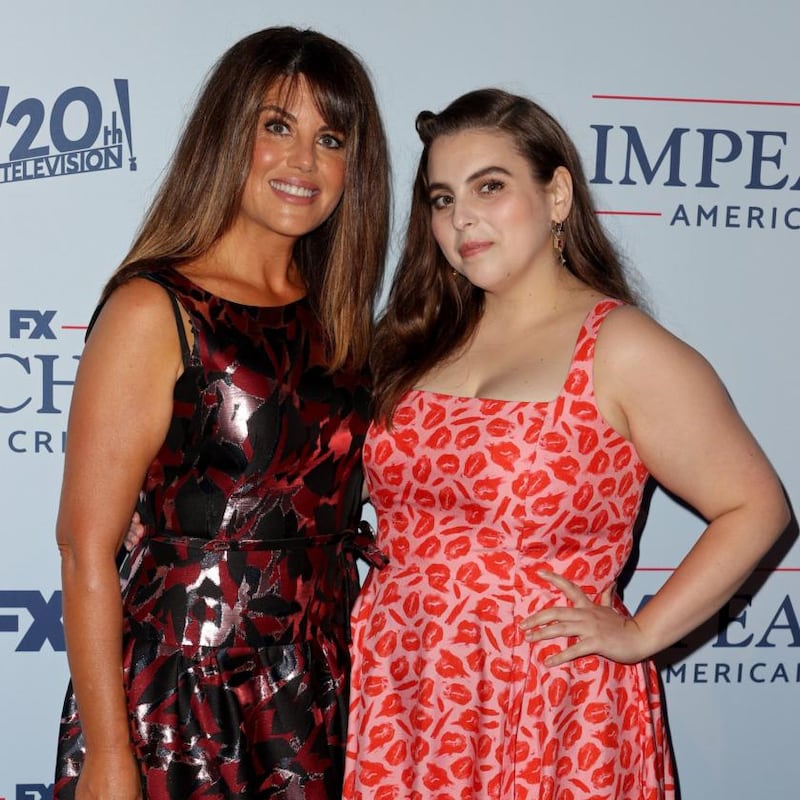
It would be impossible to extricate the Monica Lewinsky of today from what happened 23 years ago. Her mother, Marcia Lewis Straus, says Lewinsky's experiences back then haven't changed who she is at her core – the "strong willed little girl" who could talk her into or out of anything. But it has changed how she approaches life: cautiously, guardedly, fiercely protective of what she has rebuilt.
The actor Alan Cumming has been a friend since they were introduced by a mutual friend in 2000, back when "she almost wasn't really human to people", he says. (He describes how, when they would go out to eat, on more than one occasion a diner had reached over the booth divider just to touch her.) "When you realise what she's been through, the fact that she is who she is – this warm, kind, hilarious, witty person – it's just remarkable."
It’s true: spend more than a few minutes with Lewinsky and you quickly realise she is far smarter, and funnier – often at her own expense – than she often gets credit for. She is still careful, and at times circumspect, but she is a bit looser, a bit more self-assured, than she was even a few years ago.
These days she uses her name (well, mostly) in public. She is comfortable cutting off an interview – or walking off a stage – if it goes to a place she isn’t comfortable. She is financially independent for the first time – making a living from producing, speaking and consulting fees.
And she can laugh about things she couldn’t always. Like, say, the Clintons. When I was writing about her in 2015, Lewinsky abruptly pulled out after an artist who’d painted Bill Clinton’s portrait said in an interview that a “shadow” in his painting, owned by the US National Portrait Gallery, was meant to represent the affair. She was really sorry, she said, but she just felt too exposed to go forward with the article. She eventually changed her mind.
But on a recent afternoon, when we walked into a production studio for a meeting and were confronted with three giant posters bearing Hillary Clinton’s face – ads for the Hulu documentary Hillary – she just chuckled. “Well, that’s funny,” she said.
“It just doesn’t impact me the same way, you know?” she said later, when I asked how it affects her to see the Clintons in the news. “They don’t loom nearly as large as they did for two decades in my life.” And for the record: she did support Hillary Clinton in the 2016 election.
Betrayal of Friendship
Although Lewinsky is glad to have been involved in the telling of her story in Impeachment, that doesn’t mean the process has been particularly pleasant. She often had her trauma therapist with her via video as she read through scripts. She was shaken when, during production last year, she learned from her publicist that Tripp was near death. (The betrayal of that friendship, she says, was a “fissure in my life that would never close up”.)
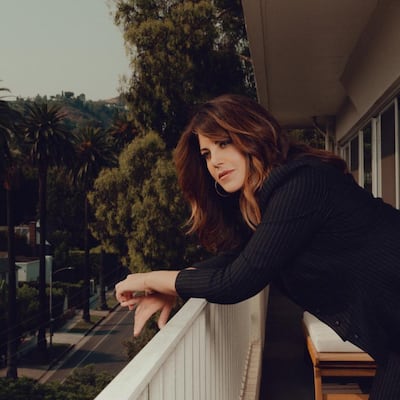
But in some ways, working on the show has also been an exercise in blending the fragments of her identities – of figuring out, as she puts it, how to “integrate” the past with the present. There is the fictional Lewinsky, who buys Sassy magazine that day in the mall and helps Tripp make a spreadsheet of her sexual encounters with Clinton. Then there is the real Lewinsky, who was too terrified to buy anything that day and never made a spreadsheet (though Tripp did take notes, she says).
There was the younger, more tempestuous Lewinsky, whose final words to Tripp, as depicted in the first episode, are to call her a “treacherous bitch”. And then there is the Lewinsky of today, who wanted to make sure her former friend was portrayed with nuance, and who opted in the writers’ room to avoid weighing in on the dynamic between the Clintons. (“It felt inappropriate, you know?”)
The reality is that this story has been part of a collective conversation for 20 years, and as I evolve, as the world evolves, it comes to have different meanings
There is Lewinsky the producer, who advised on everything from dialogue to wardrobe, says Brad Simpson, an executive producer, and who – despite the creators’ best efforts not to centre the show on sex – encouraged them to include the infamous moment when she flashed her thong at the president (even though it makes her cringe). “I just felt I shouldn’t get a pass,” she says.
Then there is Lewinsky the person, who has to keep reminding herself that this is “a dramatisation” and that it is possible to make a show about the past while still moving forward. Though she does wonder: will she ever be able to be done talking about it? Will we?
“The reality is that this story has been part of a collective conversation for 20 years, and as I evolve, as the world evolves, it comes to have different meanings,” she says as she zips through traffic in Santa Monica, making her way to the pier for a walk along the beach.
"So I don't know," she says. "It might be the last time. I hope it's the last time. But I have no idea." – This article originally appeared in The New York Times
















